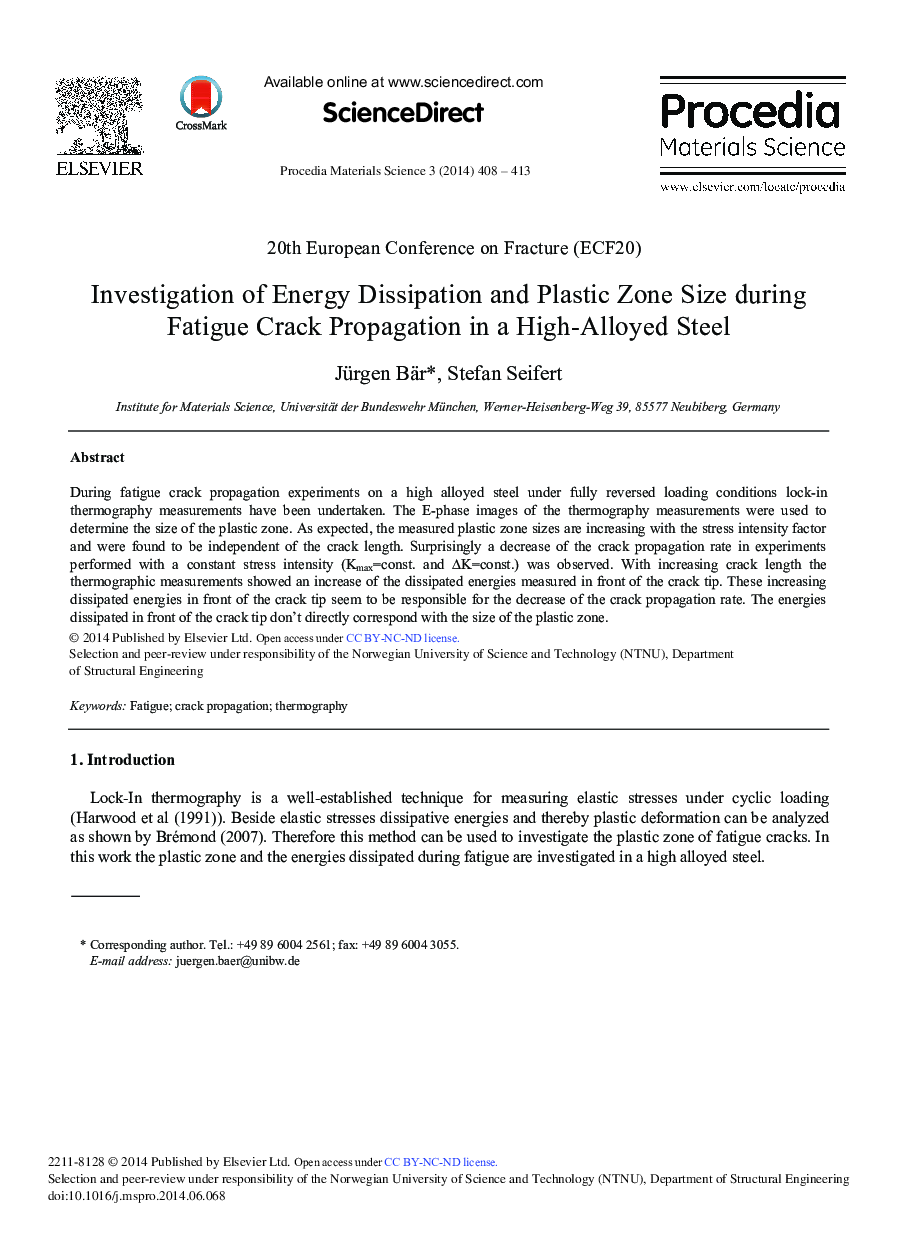| Article ID | Journal | Published Year | Pages | File Type |
|---|---|---|---|---|
| 1634809 | Procedia Materials Science | 2014 | 6 Pages |
During fatigue crack propagation experiments on a high alloyed steel under fully reversed loading conditions lock-in thermography measurements have been undertaken. The E-phase images of the thermography measurements were used to determine the size of the plastic zone. As expected, the measured plastic zone sizes are increasing with the stress intensity factor and were found to be independent of the crack length. Surprisingly a decrease of the crack propagation rate in experiments performed with a constant stress intensity (Kmax=const. and ⊗K=const.) was observed. With increasing crack length the thermographic measurements showed an increase of the dissipated energies measured in front of the crack tip. These increasing dissipated energies in front of the crack tip seem to be responsible for the decrease of the crack propagation rate. The energies dissipated in front of the crack tip don’t directly correspond with the size of the plastic zone.
